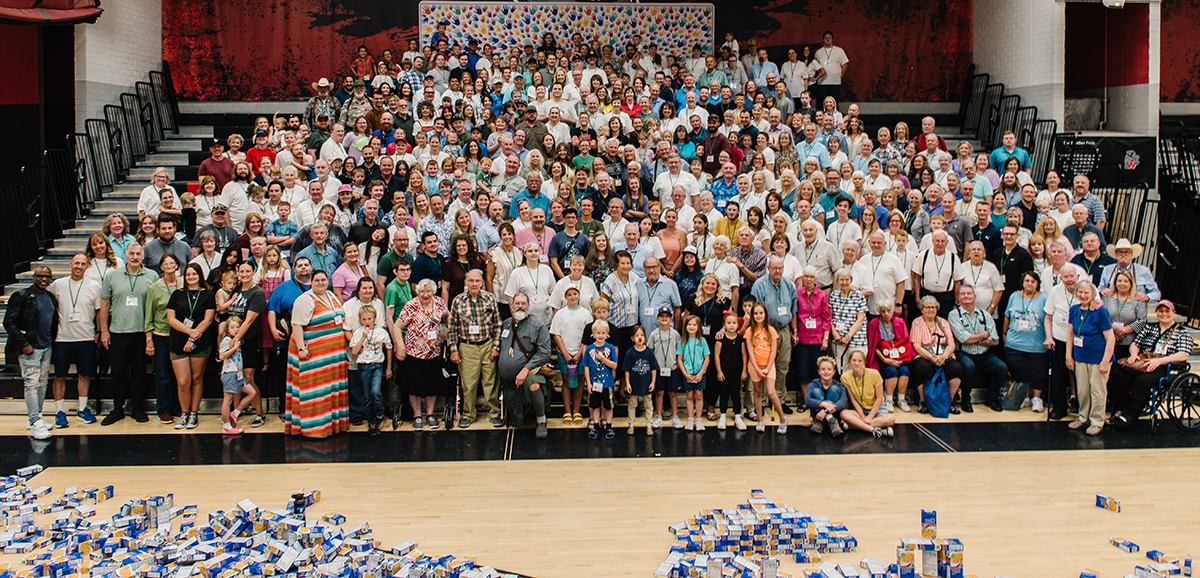https://www.deseretnews.com/article/700150651/DNA-solves-a-Joseph-Smith-mystery.html
SALT LAKE CITY — Ugo Perego had almost all the DNA evidence he needed to determine who was the father of John Reed Hancock.
One of the alleged fathers was the most obvious: Levi W. Hancock.
The other alleged father was Joseph Smith, the founding prophet of The Church of Jesus Christ of Latter-day Saints.
Only one piece was missing to solve the mystery.
Historians and critics have struggled for more than a century to identify children Joseph Smith may have had through polygamous marriages in the 1840s. If definitive answers could be found, it would shed light on how plural marriage was introduced to Mormons by Joseph Smith in Illinois. Brigham Young succeeded Joseph Smith as leader of the LDS Church and announced the practice publicly in Utah. The church ended polygamy in 1890.
But questions remain today — particularly whether Joseph Smith, who had nine biological children with his wife Emma Smith, had any children through a polygamous wife. Perego, a senior researcher at the Sorenson Molecular Genealogy Foundation, has looked at this question since 2003 when a descendant of Moroni Pratt called him on the phone.
The descendant had read in Fawn Brodie’s critical biography, “No Man Knows My History: The Life of Joseph Smith,” that Moroni Pratt wasn’t the son of early LDS apostle Parley P. Pratt, but that he was really the son of Joseph Smith. He wanted to know if Perego could use DNA to tell if Moroni Pratt was really Joseph Smith’s son.
The DNA signature of Joseph Smith was easy. Perego had reconstructed it years earlier while trying to trace Joseph Smith’s DNA back to England and Ireland. “This is a very accurate signature. It would not be any different if Joseph Smith were standing next to me to get a DNA sample directly from him,” Perego said.
He took other DNA samples from Pratt’s descendants and made the comparison.
Moroni Pratt was not Joseph Smith’s son, he was Parley P. Pratt’s son.
The Joseph Smith family association referred others to Perego. These were people who wanted to join the association because they had read references in books like Brodie’s that listed their ancestor as a possible child of Joseph Smith. DNA gave the conclusive answers that rumor and speculation couldn’t give:
Oliver Buell was not Joseph Smith’s son.
Zebulon Jacobs was not Joseph Smith’s son.
Orrison Smith was not Joseph Smith’s son.
Mosiah Hancock was not Joseph Smith’s son.
The DNA research on the last one, Mosiah Hancock, gave Perego the DNA signature of Levi Hancock. But to test whether Mosiah’s brother John Reed Hancock was a son of Joseph Smith, he needed to find one missing piece of the puzzle: a descendant of John Reed Hancock.
It was Brodie’s book and Hancock family traditions that raised the question of whether John Reed Hancock was really Joseph Smith’s son. A person who was interested in the subject had sent Perego a pedigree chart that named some of John Reed Hancock’s living descendants, but Perego didn’t know how to contact them. “I am not a genealogist. I don’t know how to find particular individuals,” Perego said.
Then in February of this year, he spoke at a Family History Expo in Phoenix and in St. George. After the events, he received an email from a woman naming a living descendant of John Reed Hancock — including an address. He checked the name and it matched the pedigree chart.
Before the end of February, Perego had the DNA sample he needed.
“I am a scientist. I look at the data objectively. I don’t care if the results are positive or negative. It doesn’t affect my trust in religion or in science,” Perego said. “If I were to find a child from Joseph Smith from a plural marriage, I would think that was cool because we would learn something more about what was going on.”
It was a simple matter for Perego to compare the DNA profile of the descendant of John Reed Hancock to Joseph Smith’s profile and Levi Hancock’s profile. “It could have been that it didn’t match either one of them. There could be an error in the genealogy.”
He had 46 DNA markers to match up.
He compared it to Joseph Smith first.
“It is not a match at all to Joseph Smith,” Perego said. “There is no biological relationship within the historical timeframe of these two individuals.”
He compared it to Levi Hancock.
“It is a perfect match to all the other Hancock males in my database — including his brother Mosiah,” Perego said. “Case solved.”
But not every case can be solved. A few alleged children of Joseph Smith died as infants and their burial places are not known. Descendants of daughters are particularly difficult to test conclusively because the easy-to-identify Y chromosome signature only works to identify male descendants.
But for now, one more piece of the puzzle has been solved. Perego is working on a detailed scientific analysis of the case that he hopes will be published soon in the Mormon Historical Studies journal.
“Through DNA we will not be able to test 100 percent of the cases. But if we test 70 percent of them and they are all negative, does that provide some insight on the topic that we did not consider before?” Perego said. “That is not for me to answer.”
Email:Â mdegroote@desnews.com. Twitter:Â www.twitter.com/degrootedegroote

